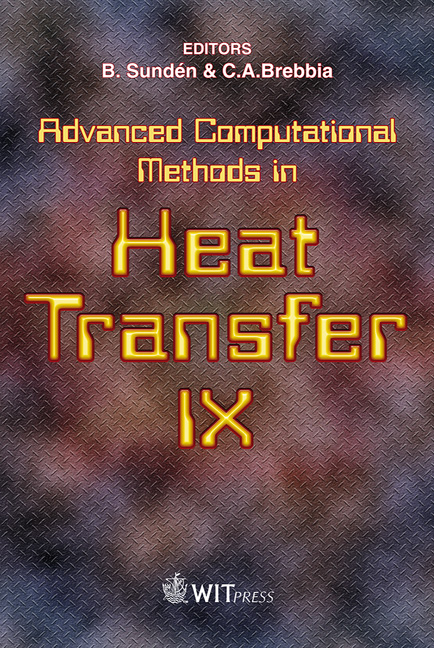The Re-commissioned Thermosyphon Reboiler Research Facility In The Morton Laboratory
Price
Free (open access)
Transaction
Volume
53
Pages
14
Published
2006
Size
503 kb
Paper DOI
10.2495/HT060331
Copyright
WIT Press
Author(s)
A. Alane & P. J. Heggs
Abstract
Vapour generation through boiling is one of the most ubiquitous industrial processes. Vertical thermosyphon reboilers are frequently used to generate vapour at the base of distillation columns. Present design methods have the major emphasis on the process side (boiling). The heating of the vertical boiler is decoupled from the system. Additionally, most academic research has considered a single tube flow arrangement with controlled and uniform electrical heating. However, many applications in distillation are now using sub-atmospheric pressure operation (higher thermodynamic efficiency, reduced energy consumption, prevents thermal degradation, cheaper materials of construction and safe operation). The literature does not contain many references to this mode of operation and existing design techniques do no adequately cover sub-atmospheric pressure operation. The thermosyphon reboiler research facility at the University of Manchester in the Morton Laboratory comprises 50 tubes of 3 m thermal lengths (19.86 mm ID) and 3 segmental baffles (TEMA E type shell and TEMA A type header) with steam condensing on the shell side, 2 large horizontal condensers with 106 and 196 tubes, both TEMA E type shells and B type headers. Vacuum is pulled on the process side and the shell side by means of two separate liquid ring pumps. The process fluid is water flowing in the tubes counter-current to the condensing steam in the shell side. The primary objective is to study the operation of the thermosyphon reboiler over the pressure range 0.1 bar – atmospheric. New additional instrumentation for temperature, pressure and flow measurements have been calibrated and installed. At the present time, the equipment is fully instrumented, re-insulated and has been successfully commissioned. This paper describes the equipment in detail, its configuration, instrumentation (control, safety and scientific), modifications from the previous arrangement (Emerson DeltaV computer control software and data logger, new instrumentation) and the effect on errors in the mass and energy calculations. A brief reference will be made to the complications encountered during commissioning and the solutions adopted. Keywords: boiling, vacuum, thermosyphon reboiler, research facility, coupled problem, instrumentation, commissioning.
Keywords
boiling, vacuum, thermosyphon reboiler, research facility, coupled problem, instrumentation, commissioning.





